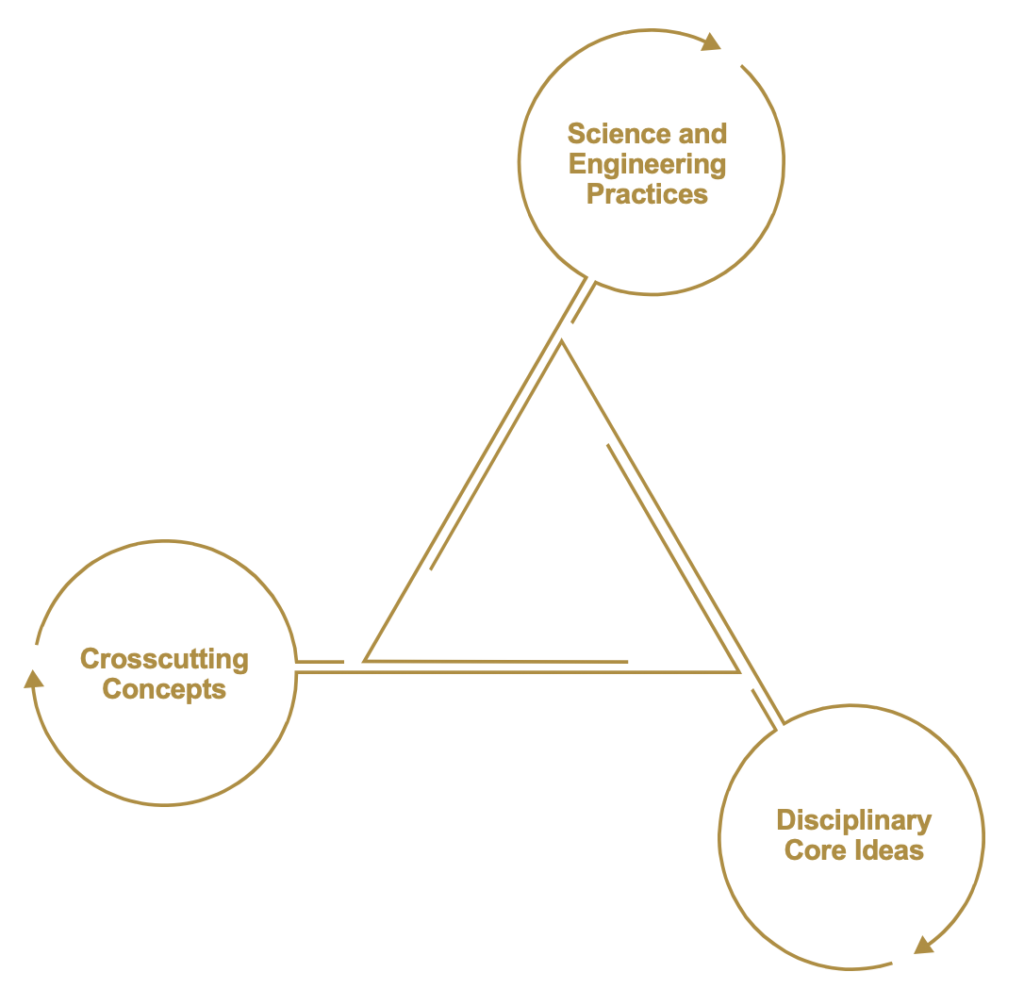Standards Alignment
Designed to meet every standard. Including yours.
Today, NGSS and the Framework call for three-dimensional learning experiences that help students meet performance expectations. For three decades, the experts at UC Berkeley’s Lawrence Hall of Science have anticipated these goals and continuously refined FOSS to meet them.
“FOSS already was using the philosophy behind Next Generation Science
Erin A., Science Teacher, Delaware
Standards before they were officially adopted or given explicit terminology.
You have the practices, crosscutting concepts, and DCI information.
Thank you for being ‘the wheel’ before it was reinvented!”
FOSS promotes three-dimensional learning
FOSS and NGSS: We set the standard before there was one.
Over a quarter century before the inception of A Framework for K–12 Science Education and NGSS, FOSS was applying research-based practices to engage students as scientists, challenging students to make sense of real-world phenomena as they learned how to solve problems. Today, FOSS embodies the three-dimensional learning the standards were made for — teaching not just rote knowledge, but scientific thinking.

Science and Engineering Practices
Scientists and engineers use these cognitive tools to answer questions and design solutions. Through these same practices, FOSS students gather evidence to explain real-world phenomena.
Disciplinary Core Ideas
FOSS students develop these grade-level appropriate building blocks throughout their investigations to make sense of their observations and solve problems.
Crosscutting Concepts
These ideas tie together the varied concepts and disciplines of science. FOSS students apply them to different situations, making connections and
building understanding.
“FOSS is in harmony with both the intent and content of the NGSS…
Craig Gabler, Ph.D., Member, NGSS Writing Team
providing the resources necessary for effective student learning, including
assessments that measure all three dimensions.”
Active investigation is at the heart of FOSS.
FOSS makes them love science by letting them do science.
FOSS builds student understanding of core science concepts through active investigation. FOSS is built around firsthand investigation of phenomena, using classroom-tested pedagogies and practices to build students’ understanding of disciplinary core ideas in science.

Science and Engineering Practices
Scientists and engineers use these cognitive tools to answer questions and design solutions. Through these same practices, FOSS students gather evidence to explain real-world phenomena.
Disciplinary Core Ideas
FOSS students develop these grade-level appropriate building blocks throughout their investigations to make sense of their observations and solve problems.
Crosscutting Concepts
These ideas tie together the varied concepts and disciplines of science. FOSS students apply them to different situations, making connections and
building understanding.
Science and Engineering Practices
Scientists and engineers use these cognitive tools to answer questions and design solutions. Through these same practices, FOSS students gather evidence to explain real-world phenomena.
Disciplinary Core Ideas
FOSS students develop these grade-level appropriate building blocks throughout their investigations to make sense of their observations and solve problems.
Crosscutting Concepts
These ideas tie together the varied concepts and disciplines of science. FOSS students apply them to different situations, making connections and
building understanding.
“FOSS provides necessary background information, lessons, evaluation
Lori L., STEM Coordinator, Harrisburg, PA
tools, and videos promoting exemplary levels of student engagement.
Now, at the end of each STEM Lab session, students are able to accurately
articulate the practices in which they engaged.”
Phenomena: FOSS puts students first.
FOSS invites students to not just watch phenomena but actively investigate them, the philosophy later codified by NGSS and the Framework. And unlike some recent programs that graft the phenomenon onto the start of every lesson, FOSS gives learners a logical context so they understand it.
A member of the original NGSS writing team explains why:

Storylines in FOSS: a journey of discovery.
Modern science standards encourage students to solve problems and figure out solutions in a journey guided by a storyline. FOSS puts the storyline front and center. Students’ observations of phenomena lead to questions, which lead to the next step in the storyline. In FOSS, students know the overarching problem and the role of each investigation in solving it.
FOSS: Every state. Every standard. Every student.
Whether your district’s goal is to teach a phenomenon-based NGSS science curriculum while integrating Common Core State Standards in ELA and Math, or to generally embrace the vision of the Framework, you’ll find that the research-based FOSS curriculum with complete equipment kits is ideal for your elementary and middle school classrooms.
